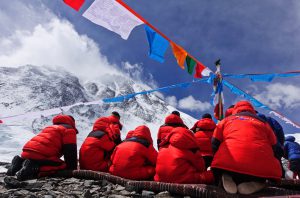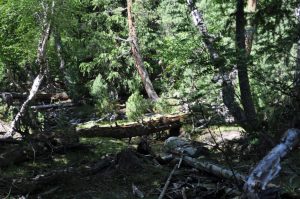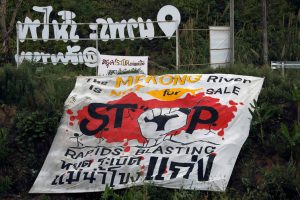The bottom of the ocean and the roof of the world have something in common other than being extreme and inhospitable environments – they’re also polluted.
Recent reports in Chinese and international media have highlighted the problem of litter on Mount Everest, particularly on the southern Nepalese side of the mountain. But those climbing the northern slopes, which fall within China’s borders, are also starting to worry.
Unfortunately, cleaning up the rubbish is no easy task, as student Li Jinxue found when he joined a team of 14 students, teachers and alumni of Peking University to climb the mountain in May. As they made their way up, Jinxue photographed the rubbish and collected some of it. He spoke to chinadialogue about this “green mountaineering” approach.
chinadialogue (CD): What drove you and your teammates to collect litter during your climb?
LJX: From the start the team wanted to practice "green mountaineering". Although it’s common to become lethargic in such an extreme environment, our leader, Li Wei, a man in his sixties, always took the lead and encouraged us. Over the years he’s maintained that we should leave no litter behind. During the climb some other teams also joined us in collecting litter. We’d like to see that become the norm on Everest.
CD: Can you tell us what you saw from 5,000 metres upwards?
Li Jinxue (LJX): The 5,000-metre point is a very clear boundary where there’s a risk of acute mountain sickness. What I found most noticeable was the effort required – even a little activity would leave you panting far more than at lower altitude.
We climbed upwards along the traditional northern route, passing through a total of six camps. We set up base camp at 5,200 metres; on to Interim Camp at 5,800 metres; Advanced Base Camp at 6,500 metres; and then three temporary camps at 7,000 metres and above (Camp 1, Camp 2, and at 8,300 metres, Assault Camp).
You start to see litter from base camp onwards. It’s mostly between there and Camp 1, and in particular between base camp and Advanced Base Camp. From Camp 1 onwards the combination of wind and shifting snows means the rubbish doesn’t stay put. Also, these are temporary camps so litter doesn’t accumulate year-round.
CD: What types of litter are there?
LJX: 70-80% of it is cans and plastic bottles.
CD: Is mountaineering equipment, such as oxygen tanks, left on the mountain?
LJX: In the early years of commercial mountaineering that did happen. But now the Chinese guiding companies recover those partly for the sake of the environment and partly to save money. Guides who bring extra tanks down get a reward. The guiding companies won’t leave equipment up there, except in circumstances where something just can’t be found, for example, if tents or other gear is blown away in a storm.
You’re at your physical and psychological limits
CD: Why would mountaineers leave litter?
LJX: Environmental principles aren’t such a priority in those extreme circumstances. You’re at your physical and psychological limits; there’s little time for thinking about the environment. It’s difficult to make the entire trip without leaving any litter. Collecting litter up there took far more mental and physical effort than it would have taken under normal circumstances.
CD: How is the issue of litter on the northern side of Everest currently managed?
LJX: The mountaineering base camp is only open to registered mountaineers, unlike the tourist base camp, and so there aren’t that many people there. The Tibet Sports Bureau, the mountaineering association, and the guiding companies take measures. For example, the companies organise a clear-up of the routes once the climbing season is over. Every year several tonnes of litter are brought down. And teams staying at base camp have to pay an environmental protection fee.
I understand that there are some new policies focused on the Everest litter problem this year, such as Tibetan government regulations on handling waste at base camp height and above. There’s also the civil society Himalayan Environmental Protection Fund designed to combine various resources and tackle the litter issue.
Guiding companies have made some changes to their logistics to cut down on litter. For example, they no longer cook above base camp; prepared meals are carried up by guides. This prevents the production of kitchen waste at higher altitudes.
Seven 'Leave no trace' principles
- Plan ahead and prepare
- Travel and camp on durable surfaces
- Dispose of waste properly
- Leave what you find
- Minimise campfire impacts
- Respect wildlife
- Be considerate of other visitors
For more information contacts the Leave No Trace Center for Outdoor Ethics.








